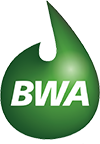EXECUTIVE SUMMARY
The United Nations Office for the Coordination of Humanitarian Affairs ranks Barbados among the top ten most water-stressed countries in the world. Given the limited availability of surface water; the country is almost entirely dependent on groundwater from aquifer sources. A Green Climate Fund preparation project has been developed by the Government of Barbados, the Barbados Water Authority (BWA), and the Caribbean Community Climate Change Centre (CCCCC) with the goal of incorporating climate resilience into Barbados’ wastewater systems, with a focus on the South Coast Sewage Treatment Plant (SCSTP).
The general objective of the Project is to increase Barbados’ water resilience to Climate Change with a focus on increasing water security and improving environmental conditions through the upgrading of the existing SCSTP, construction of a new water reclamation facility, installation of up to 25km of pipelines, the development of a 7MW solar facility and through institutional strengthening. The proposed strategy to mitigate against the issue of water scarcity in the island would see the tertiary treatment of wastewater to a standard that would allow for the provision of the treated wastewater for irrigational purposes and for aquifer recharge. As the primary beneficiaries of the outcomes of the Project are those in the agricultural industry, in addressing water scarcity, food insecurity would also be offset.
The Project area encompasses the existing South Coast Sewage Treatment Plant located in Graeme Hall, adjacent to Graeme Hall Nature Reserve/Swamp (a protected site in RAMSAR) to the south, the Department of Agriculture Research Station to the north, and Harmony Hall to the east. The BWA has highlighted their intention to pump the treated wastewater from the reclamation plant to a catchment pond, buried storage tank or some other storage mechanism in the Staple Grove area, to then be gravity fed through to the Browne’s Catchment Pond at River Plantation to contribute to the irrigation scheme. The disinfected and filtered reclaimed water will be allocated to agricultural users for use on edible food crops and for other agricultural irrigation purposes to support the expansion of agricultural activities and food security in Barbados.
The social assessment conducted targeted communities within 1 km of the Project area to determine how the different components of the Project could prove impactful to nearby communities, even those not directly a part of the sewered area. There was wide acceptance of the intended outcomes of the Project, particularly in the farmer populace and those who acknowledge the issues of water scarcity and food insecurity, as well as inflated consumer costs. The concerns raised regarded the potential disruptions in traffic, particularly as it relates to accessing communities, businesses and places of religious significance. The installation of the pipeline proved to be the most potentially problematic due to the spatial extent of the planned works and the likelihood of the works disrupting not only traffic, but business operations and agricultural activity. Furthermore, as the proposed route of the pipeline runs along the historic trailway, the Future Centre Trust who serves as the organization who assumes responsibility of the conservation, restoration and development of the trailway and its assets, highlighted the need for appropriate measures to be taken so as to not undo or decelerate the progress of the works that the Trust has undertaken.
These measures, and other measures to mitigate against different physical, ecological and social impacts were constituent of the different management plans prepared. These management plans formulated the Environmental and Social Management Plan (ESMP). The ESMP included the following management plans:
- Environmental Health and Safety Management Plan
- Social Management Plan
- Security Management Plan
- Workers’ Health and safety plan
- Emergency Response Plan
- Contractor Management Plan
- Labour Management Plan (including Code of Conduct and GBV Prevention)
- Heritage Management Plan (including Chance Find Program)
- Stakeholder Engagement Plan
- Grievance Redress Mechanism
The abovementioned management plans were prepared to propose the measures to be taken to mitigate against and address issues related to air pollution, noise and vibration pollution, flooding, disruption of biological communities, social conflicts, health and safety of workers, interruption to local businesses and livelihoods, gender inequality in the workforce, community road safety, and utility management and coordination. Common management and mitigation measures proposed included demarcating construction zones, training staff, providing appropriate equipment, and communicating with communities and the public.
Link to complete document: Updated ESIA ESMP Document (Revised Apr_16_2024)
Link to Updated June Version: https://www.iadb.org/document.cfm?id=EZIDB0001137-1480958993-25
Link to Updated September 26, 2024 Version: https://www.iadb.org/document.cfm?id=EZIDB0001137-1480958993-33
